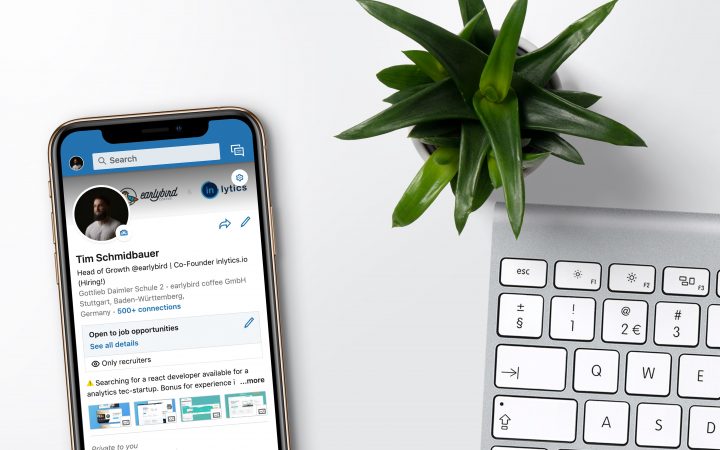
In the third installment of our ‘Career Change’ series, we are looking at the option of becoming freelance in the digital tech industries. This focus was inspired by chats taking place in the #-freelance channel on Slack and from our own observations of seeing and hearing from more people taking the plunge into freelance-life. We also know that 2020 changed lifestyles, circumstances and perspectives for many. Career change generally is poignant right now, and the flexibility and freedom of being your own boss has, for some, become not just more desirable, but realistic. This post seeks to provide useful information to help you get set up, to signpost you to other resources, and to share the experiences of other awesome freelance folk that have contributed to our research.
“When you become a freelancer, you’re not just taking on one role, you become the project manager, the accountant, the CEO, the client manager… freelancing is running a business.” We took this quote from a very handy and recent blog post published by Creative Boom. We love it and have included it here because it’s probably the first and most important message you should get your head around if you are considering becoming a freelancer.
We’re tackling our post with this sentiment in mind and breaking the information down by ‘department’. So, let’s kick off with one of the most asked-about topics: how to handle your finances.
Accounts
Paying tax
If you have been employed before, you will be used to the PAYE system, whereby your employer pays you a monthly salary and your National Insurance (NI), Income Tax, pension contributions and other payments (such as a Student Loan), are automatically deducted from your wage. This doesn’t happen when you are working for yourself; you are entirely responsible for paying your taxes, your NI contributions and student loan repayments and if you want a private pension, you have to set this up too.
The first step is to register as a sole trader with HMRC (the terms ‘freelance’ and ‘self-employed’ are not commonly used by the government in the context of paying tax). There are good resources available on this section of the .gov website and you’ll be linked to useful guides throughout the process.
You’ll pay tax after the end of the financial year, once you have submitted a tax return. Three crucial things to get in your head are:
- To complete a tax return you need to show the HMRC all outgoing and incoming funds for the year just gone, so log everything as you go – it’s a massive job if you leave it until the end of the year. Having a separate bank account for your business is a good idea, as this will help to keep all transactions in one place.
- Depending on how you pay yourself (you might take a monthly salary, or you might take an amount from each invoice, as soon as you get it), quickly get into the habit of ring fencing an amount for your tax. A good rule of thumb is to put a third of every payment aside, otherwise you could be faced with a tax bill and no funds to pay it.
Take the time to read HMRC guidance, watch the webinars and even sign up to HMRC’s email bulletins. They might sound dry but they will give you useful reminders of tax deadlines and changes to tax rules, as well as helping you understand what qualifies as a work expense (such as things like a ‘work at home allowance’, car usage, equipment and mobile phone bills). Getting your head around this information will save you a lot of stress and time when it comes to completing your first tax return.

Max Revitt is a self-employed software consultant in Sheffield. He told us that tax is the area he wishes he’d known more about when starting out, explaining:
“The day to day running of a business – tax and financial set-aside – always felt very tricky without paying blindly to an accountant – yet still remains your responsibility if things go wrong.”
Having an accountant take care of your annual tax return is, if you can afford it, a worthwhile investment and can take a lot of pressure off you. However, it isn’t a reason not to do your homework. As Max points out, the responsibility to pay tax on time and in full, ultimately sits with you.
Getting paid
It’s pretty common to shy away from awkward conversations about money, not least to have to chase up a late payment with a client. But, that’s something you should prepare for. Getting every invoice paid on time is the ideal but not the reality, so when setting up outgoing payments that rely on the money coming in, build in a couple of days grace (if not more) to allow for delays.
You have to be clear and upfront about your payment terms with clients – if you want payment within two weeks of issuing an invoice, state this in your initial terms of business. Don’t be afraid to draw a new client’s attention to it, to confirm they can meet your terms. Some companies will have rigid payment processes in place, meaning they pay invoices on a 30 day basis and no less – wouldn’t you rather know that before you commit to the work?
Depending on the nature of your work, you should also agree at the start how and when you will charge your clients. If you are providing ongoing support, for example as a web developer who handles monthly updates and maintenance, you could consider a retainer of a set amount that you invoice on the last day of every month. Or, if you are handling a web build project with a finite start and finish, you might invoice at a set of key milestones throughout the project, or in one go at the end.
Either way, have this agreed in writing before you commit to the work, as this sets expectations on both sides and gives you leverage if there are any delays in payment.
Business Development
We noticed a while ago on Slack that some people considering freelancing just weren’t confident about how they would find and secure new business. There is no quick win and what works for some, won’t work for others. We’ve tried to explore some of the basics that, at the very least, will help you to get your name out there, and talk to people about what you do.
Know what you do, and who you can help
Hopefully, by the point at which you’ve made the decision to go freelance, you have identified a need for the services that you offer. You should understand your strengths, what makes you unique and the type of client you are targeting.
For example, in this podcast episode Tom Scott, founder of Little Mesters marketing agency, talks about his approach to working with freelancers, and why being industry-specific can give you an edge.
You need to be confident in communicating what you do and how you do it. You’ll have a professional brand – not a logo, not a colour palette – but the way that people perceive you, and those early days are the best time to reinforce what it is that makes you awesome. Don’t contrive a professional image that isn’t truly you though; clients are buying into you as a person, not just your services so (assuming you’re a nice person, which of course you are) be yourself!
Start meeting people
Sarah Lister started freelancing in 2017. She is a career change coach, social media specialist and administrator. She told us that she would have found it useful when starting out to have a guide about how to make new connections in the city, and how to find opportunities. She offers this advice:
“Attend events – including online ones at the moment – it’s amazing what new connections can lead to! Not just work-related or networking events, but social events as well. Get to know people around the city and be curious about what they do, find out if they need help with something.
“I know it can feel quite overwhelming when you first join something new, but most of my experiences of doing that have been extremely welcoming and positive.”

Freelancers are your friends
Not your enemies, not your competitors. This is another sentiment we read and nodded furiously at in Creative Boom’s recent post about freelancing. As we just mentioned, you are your brand and you offer something completely unique, so don’t look at other freelancers – even those in a similar line of work – as threats. Max also advises:
“Reaching out to people you perceive as competitors may be one of the best things you can do. Everyone has different work they enjoy or specialise in – this can be a great move for finding out information.”
Reach out to your network
If you’ve worked before doing anything, anywhere, for anyone, you do have a network. Think of all your past colleagues, employers, suppliers, collaborators, maybe even clients (just check any contracts you had with previous employers on this) and all the years of good work you have done for and with them.
These are people who already know, like and trust you, so check in with them, find out what they are up to, and let them know that you are going solo and available for work. You may be surprised at how many word of mouth referrals start coming your way.
Make it easy to see your work
Prospective clients will likely want to see examples of your work and there’s a few ways of approaching this, depending on what you do. If, for example, you are a digital content writer specialising in social media, you can compile a list of links to well-performing posts that you’ve created, ready to send out on demand.
However, if you’re a behind-the-scenes comms strategist or a digital transformation consultant, showing what you do isn’t so easy. You could write up a series of short case studies to show how you took a client from A to B, and have these ready to distribute as PDFs.
You could also ask previous clients to leave you a recommendation on LinkedIn which provides some details about the work you did for them.

LinkedIn is generally a great, free tool for showcasing your experience, your skills and previous projects. A website isn’t an essential tool for many freelancers, at least not at first, and you can use your LinkedIn profile to do many of the same things.
The ‘Featured’ tool can be used as a portfolio where you can share descriptions of your projects, with either a weblink, an image or both. You can be contacted directly using LinkedIn messenger and you can see who has looked at your profile, which can help you to target your marketing.
However you do it, try to have a handful of examples ready to send out at the drop of a hat, because in our experience, many people seeking freelance support, need it yesterday – so the quicker you can impress them, the better.
Setting your rates
This something we saw a lot of people asking about. How do I know what to charge? Should I discount to get a foot in the door? Should I offer ‘mates rates’ to people I know?
There really isn’t a straightforward answer to this, and we certainly can’t tell you what to charge. You can get a useful steer from others who are doing it, as well as companies that use freelancers – you just need to ask the questions as most people are happy to advise.
You also need to understand the worth of what you offer. Neil Hale, a freelance SEO expert, says,
“If you are confident in the value you provide, you are probably worth more than you are currently charging. If you are nearing, or are at, full capacity, new quotes should be going out at an increased rate. Increase your prices in line with the value you provide. If you receive pushback, you may have found your ceiling. You can either accept that or start looking for clients with bigger budgets.”
When starting out, the temptation to go in low to secure those first clients is common. But can you actually afford to pay the bills on the income you’ll generate? Just remember that the time you spend on low paid work is time that you aren’t dedicating to finding and securing clients who will pay your full worth. Remember as well that, once you start working with a client at a low rate, it can be difficult to increase your rates later on.
On some occasions, you might find that a lower budget project does offer value in other ways. It might involve learning a new skill or about a new industry; it might help you to build your network; or it might give your portfolio a boost. Only you can determine whether the added value outweighs the lower rate that you’ll be paid. If you choose to take on this work, you need to keep your eye on the other goals that you set to make sure it isn’t a wasted opportunity.
Human Resources
Looking after your wellbeing
Whilst lots of people see the freelance lifestyle as offering more flexibility and the benefits of working when you want, where you want – this has its downsides. Without the structure of an office-based 9-5 day, it’s easy to let your work seep into personal time.
There is a lot of information out there about how, where and when you should work (i.e. not on the sofa, not during the evening, not in your PJs) but that’s not necessarily helpful. Afterall, some of your best ideas may come at 10PM whilst watching Netflix in your PJs – who are we to judge?
All we would say is that non-work time is precious and time away from your screen or notebook will help you. So, find what works for you and make the most of your productive hours, whilst carving out time to do all the other stuff that makes your day great.

Setting boundaries
You won’t work the same hours as all of your clients. So how can you make yourself available whilst still protecting the freedom that being freelance affords you?
Stewart Doxey is a freelance web developer who shared his experience of ‘being too available’ to clients in the early days. He explains,
“Looking back, I should have had a better process in place for onboarding new clients. I was too available and approachable to clients; receiving, and replying to, text messages and emails out of hours set the wrong precedent.”
Stewart offers the following advice to freelancers:
“It’s important to have processes in place for handling client expectations as well as working. My advice would be to provide each new client with a short set of guidelines on how you work as part of the client onboarding process.”
Don’t get lonely
Even the most introverted amongst us will benefit from some human contact during the week, but at busy times you can often go day after day working alone at home. Sheffield benefits from a wonderful collection of co-working spaces (you can find these on our map) which are great for freelancers who want to meet others and talk about their work, and also those who need a quiet space to work that isn’t home.
As the lockdown restrictions slowly begin to lift in England, co-working spaces in Sheffield will open their doors again and you can see how they did this safely in summer 2020, in this post.

Operations
Admin
To a lot of freelancers, admin and ‘ops’ can be the biggest burden on a day to day basis. There are things that simply have to be done to keep your business running, like buying equipment and keeping it maintained, renewing licences, recording your time, staying on top of your inbox, backing up your hard drive, and logging expenses. And when there’s paid work waiting to be done, prioritising your admin isn’t easy.
You could allocate time each day, like half an hour first thing, or at the end of the day. Or, have an ‘admin afternoon’ (or morning) once a week. The key thing to recognise is that admin has to be done, and you will reap the rewards by keeping on top of it.
There are lots of tools that can help you, some free and some paid-for. Harvest is a good time tracking tool and offers a basic free plan and Asana is a project management tool that also has a basic plan at no cost. Trello is a good planning and workflow management tool that also allows for collaboration, which is great if you need to share information with clients. Accounting programmes like FreeAgent and Quickbooks are helpful for managing your finances and taking some of the stress out of your annual tax return.
Essentially, there are hundreds of programmes and apps that are designed to help freelancers manage different aspects of running a business. Our advice would be to set aside some time at the very start of your freelancing journey to work out where you might need the help, and then to find the tool or tools that work for you.
Leaving it until you are busy and stressed with client work means that you’ll probably never have time to do it properly, which leaves you feeling even more busy and stressed. As the saying goes, those who fail to plan…

Closing thoughts
We know that this post won’t have answered every question you have. Every person who decides to go freelance has their unique set of circumstances so there is no one-size-fits-all approach that we can recommend you take.
What we can wholeheartedly recommend is that you use the amazing community in Sheffield, made up of kind and generous people working in the digital tech industries. Pick their brains, share your ideas, and ask for help. Our Slack community is the best place to start, and getting involved in the city’s vibrant (currently virtual) meet-up and events scene will really help you to meet people – check out our calendar for more details.
Thank you to everyone who shared their experience, ideas and insight for this post. We will be recording a podcast episode soon with a selection of freelancers to share more personal experience and insight. So, if you have a question that’d like our guests to answer, just email claire@sheffield.digital.